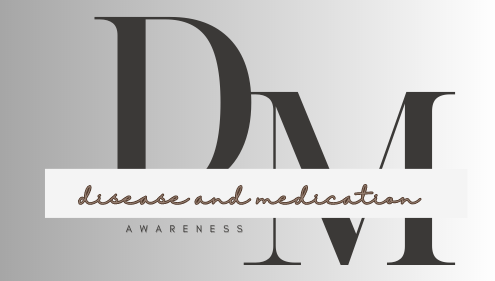Welcome to our comprehensive guide to common diseases In this guide, we will explore the various aspects of common diseases, from their causes and symptoms to their impact on daily life and the latest advancements in research and development. Understanding common diseases is crucial for promoting overall well-being and taking preventive measures to minimize their occurrence.
Furthermore, we will highlight the role of healthcare professionals in diagnosing these diseases and the various treatment options available, including medication, surgical interventions, and alternative therapies. Additionally, we will address the psychological impact of living with common diseases and the support systems available for individuals.
Understanding Common Diseases
Let’s dive into the world of common diseases and uncover the mysteries behind these prevalent health issues. From the common cold to seasonal allergies, everyday diseases affect millions of people worldwide. By understanding these illnesses, we can better equip ourselves to prevent and manage them.
The causes of common diseases may vary widely, from viral infections to environmental factors. Understanding the root causes is crucial in developing effective preventive measures. Through education and awareness, we can empower individuals to take proactive steps towards a healthier lifestyle and minimize their risk of falling victim to these frequently occurring ailments.

Symptoms and Diagnosis
Identifying the symptoms of common diseases can be a crucial step in seeking timely medical attention. From fever, cough, and fatigue to more specific signs like rashes or swelling, recognizing these indications early on can lead to effective treatment.
diagnostic procedures for common diseases often involve a combination of physical examinations, lab tests, imaging studies, and patient history reviews. These methods help healthcare professionals pinpoint the underlying cause of the symptoms and provide an accurate diagnosis.
Treatment Options
When it comes to treating common diseases, medication is often the go-to option. Whether it’s antibiotics for an infection or pain relievers for a headache, there are plenty of pharmaceutical options available to help manage and alleviate symptoms
n some cases, surgical intervention may be necessary to treat certain common diseases. Procedures such as appendectomies for appendicitis or joint replacement surgeries for arthritis can significantly improve a patient’s quality of life. While surgery may seem daunting, advancements in medical technology have made many procedures minimally invasive and with shorter recovery times.
For those seeking alternative treatment options, there are various therapies available that can complement traditional medicine. From acupuncture and chiropractic care to herbal remedies and dietary changes, these alternative therapies offer additional avenues for managing common diseases. It’s essential to discuss these options with a healthcare provider to ensure they align with your overall treatment plan.
Risk Factors
Common risk factors for these prevalent diseases include lifestyle choices such as smoking, poor diet, lack of physical activity, and excessive alcohol consumption. Additionally, genetic predisposition and environmental factors play a significant role in increasing the risk of developing these conditions. By recognizing these risk factors, individuals can take proactive steps to mitigate their chances of being affected by common diseases.
The prevalence of common diseases is astonishing, with millions of people affected worldwide. From heart disease to diabetes, these illnesses are widespread and impact individuals from all walks of life. Understanding the global prevalence can help raise awareness about the importance of prevention and early detection.
Psychological Impact
Living with a common disease can have a significant emotional impact on individuals. It’s natural to experience feelings of fear, frustration, and even sadness when dealing with the physical symptoms and lifestyle changes that come with these diseases.
While living with a common disease undoubtedly presents its own set of challenges, it’s important to focus on self-care and maintain a positive outlook. Engaging in activities that bring joy, practicing mindfulness techniques, and building strong social connections can all contribute positively to your mental well-being. Remember that your psychological health is just as important as your physical health – take proactive steps in nurturing both aspects of your overall well-being.
Frequently Asked Questions
1. What is the most common Infectious Disease?
The most common infectious disease is the common cold, which is caused by a viral infection.
2. What are the symptoms of diabetes ?
The symptoms of diabetes include frequent urination, excessive thirst, unexplained weight loss, and fatigue.
3. What is the leading cause of death worldwide?
The leading cause of death worldwide is cardiovascular disease, which includes conditions such as heart attacks and strokes.
4. What is the difference between a virus and a bacteria?
Viruses are smaller than bacteria and require a host to reproduce, while bacteria are single-celled organisms that can reproduce on their own.
5. What are the risk factors for developing cancer?
The risk factors for developing cancer include tobacco use, exposure to certain chemicals and substances, family history of cancer, and certain infections.
Conclusion
This comprehensive guide covers the understanding, symptoms, diagnosis, treatment options, impact on daily life, prevalence and risk factors, public health initiatives, research and development, psychological impact, and preventive healthcare measures for common diseases. It includes information on causes, preventive measures, identifying symptoms, diagnostic procedures, medication, surgical interventions, alternative therapies, managing diseases in daily routine, support systems, coping strategies, global prevalence, risk factors, vulnerable populations, government programs, community awareness campaigns, advancements in understanding, innovative treatments, future prospects for research, emotional effects, mental health support, stigma, and the importance of preventive healthcare and lifestyle modifications.
